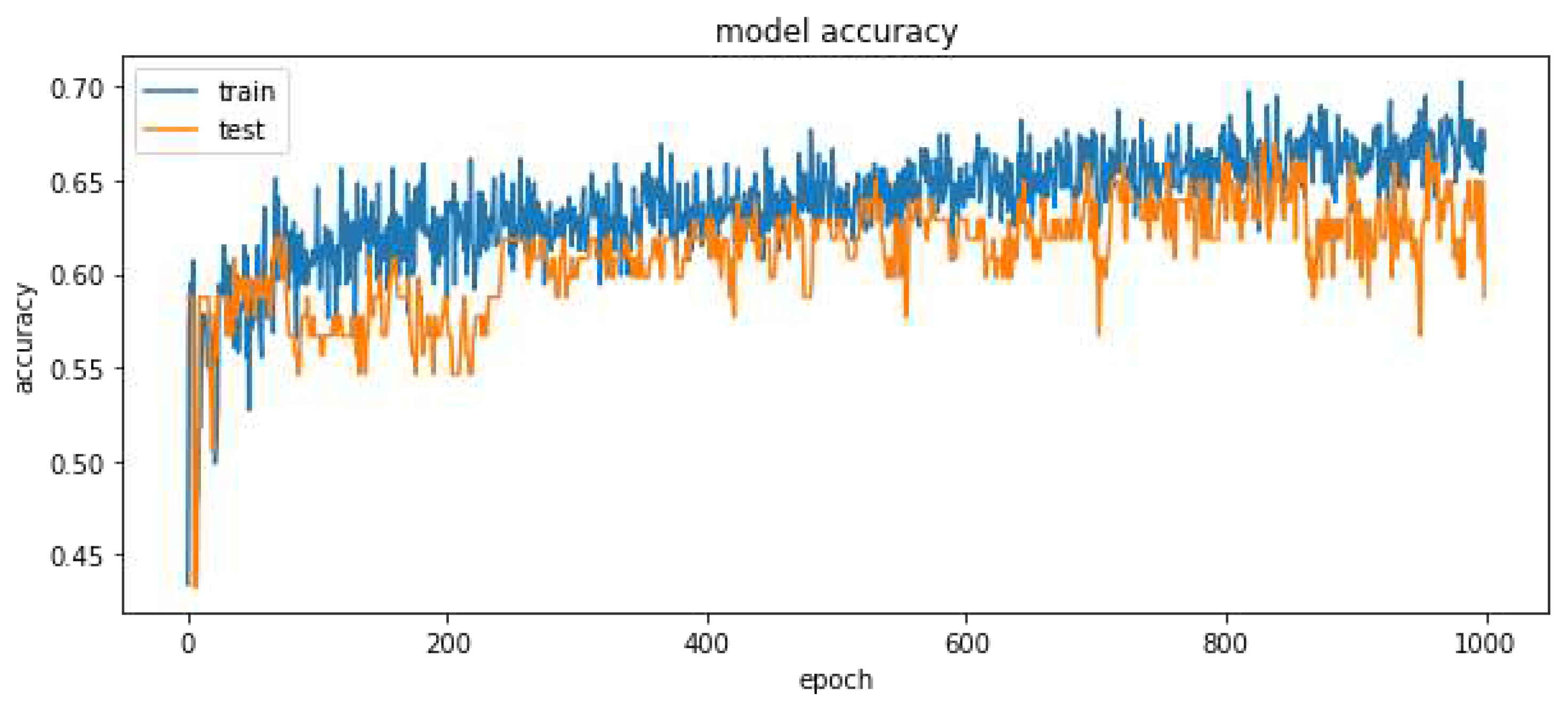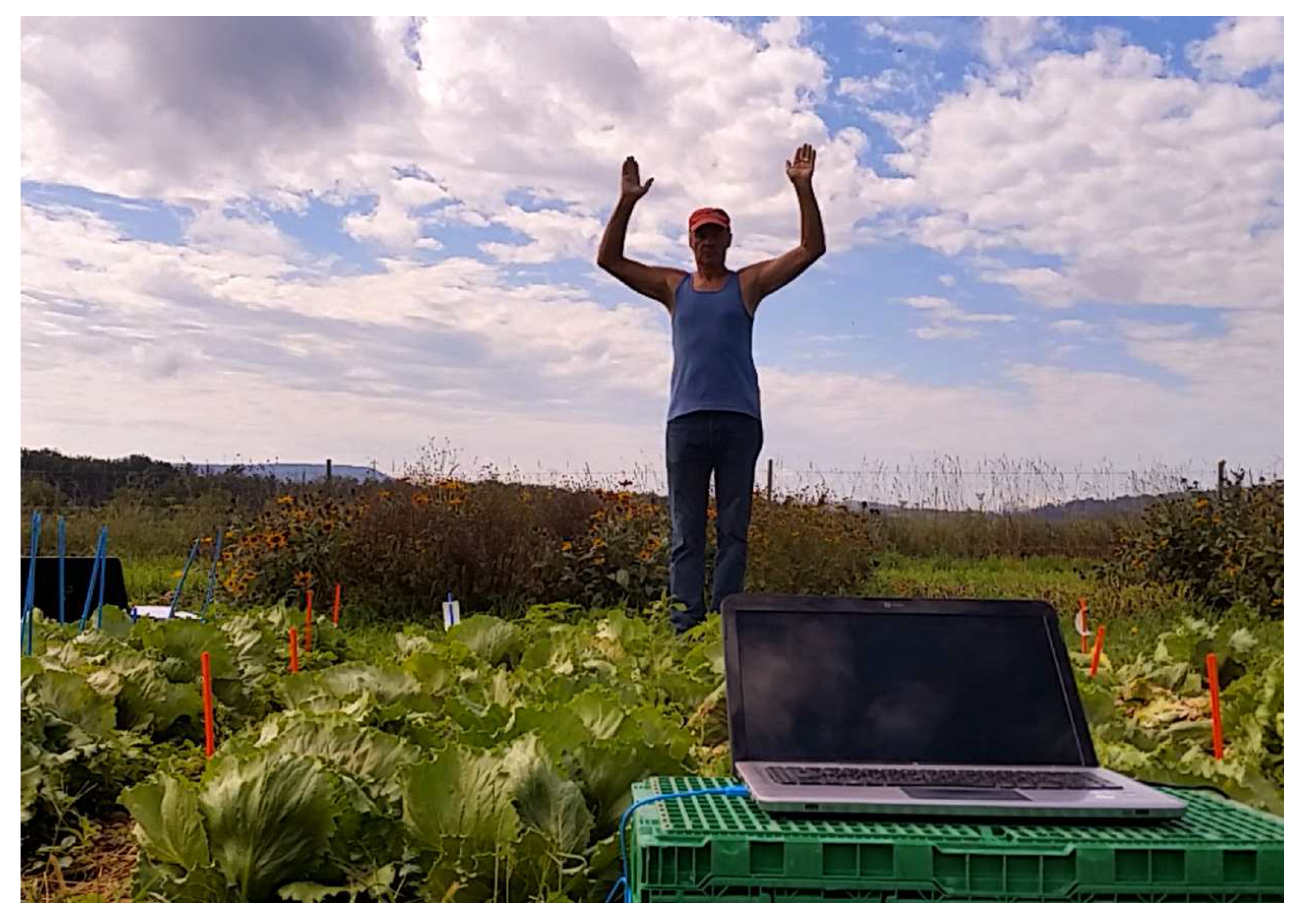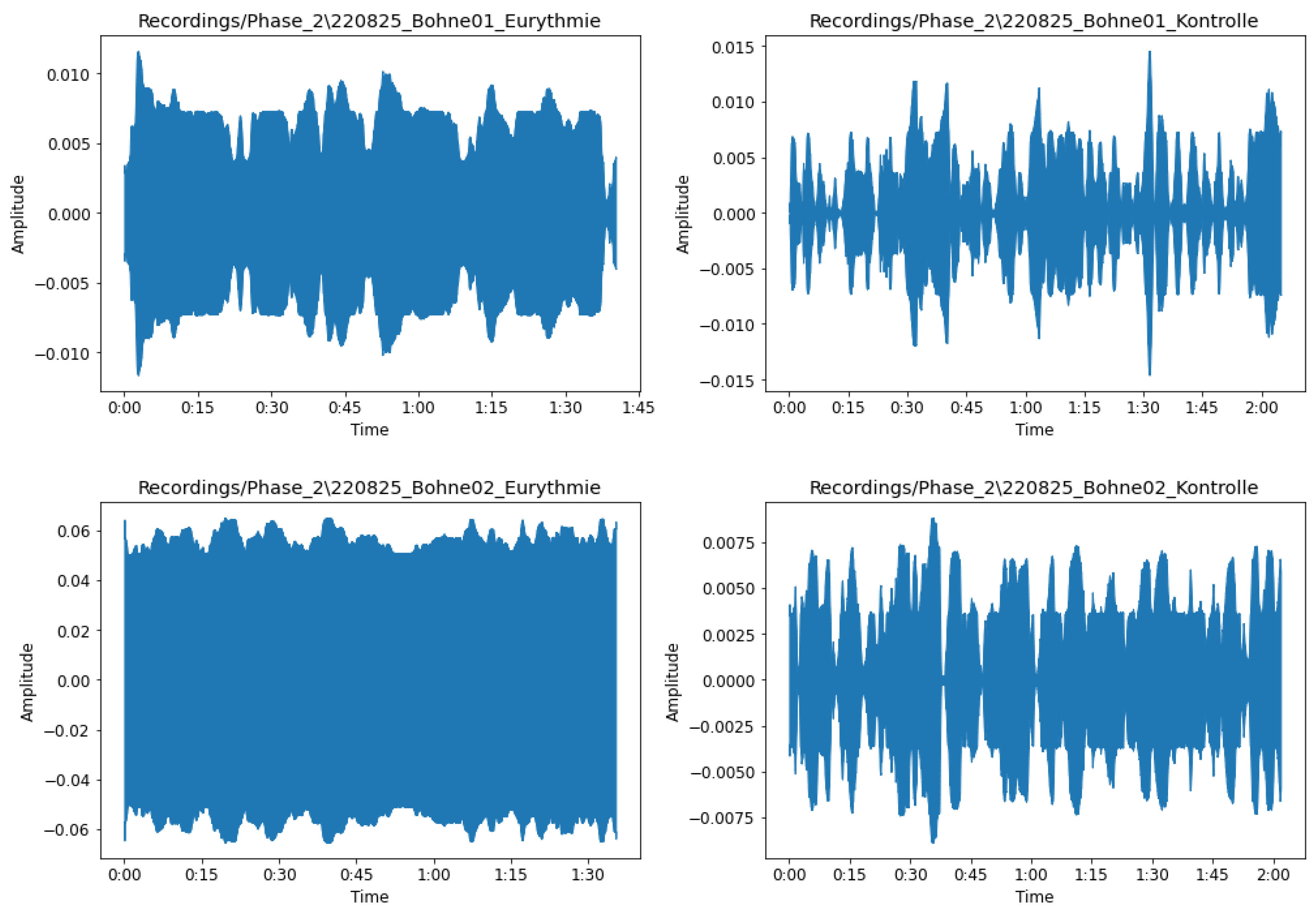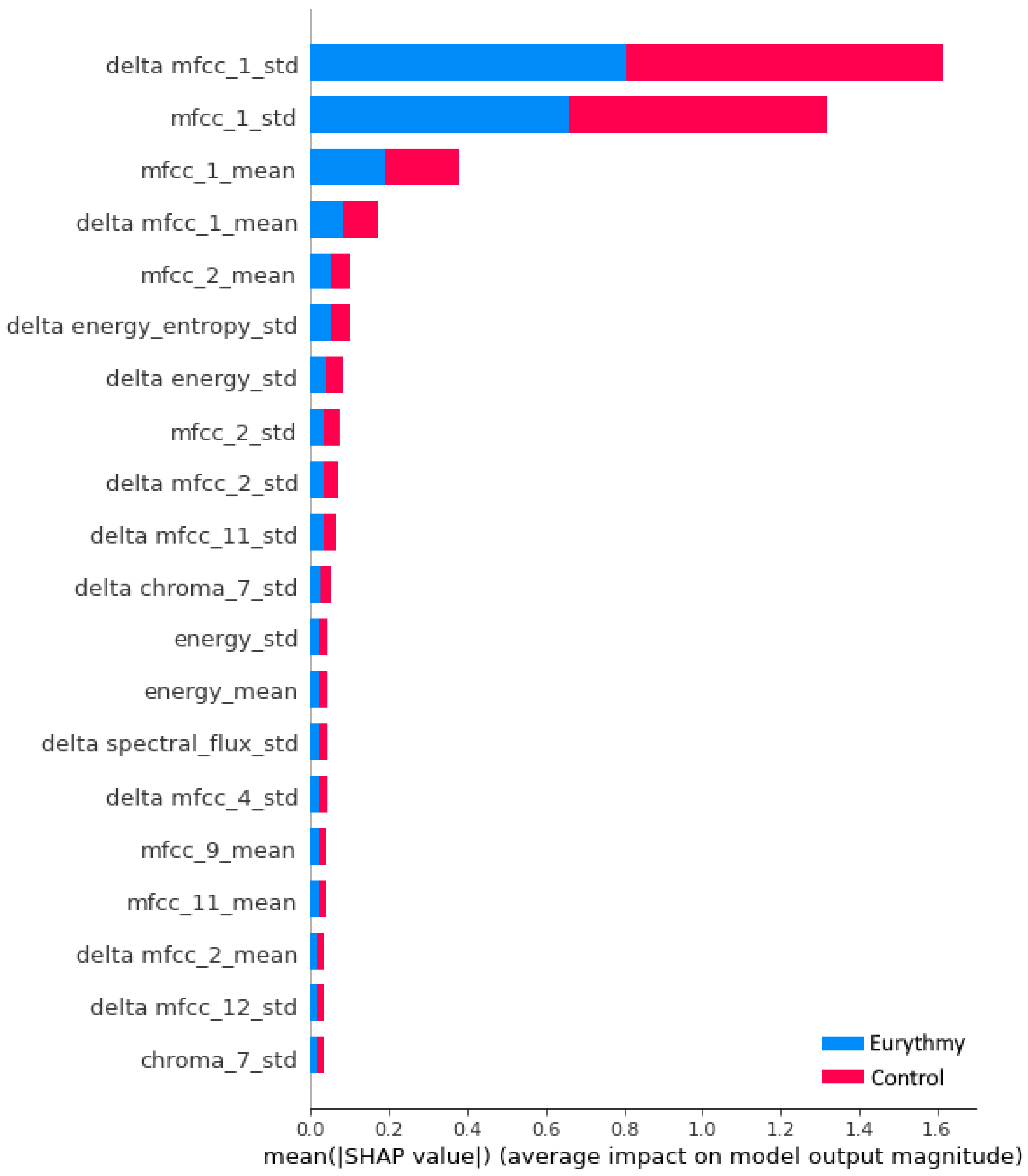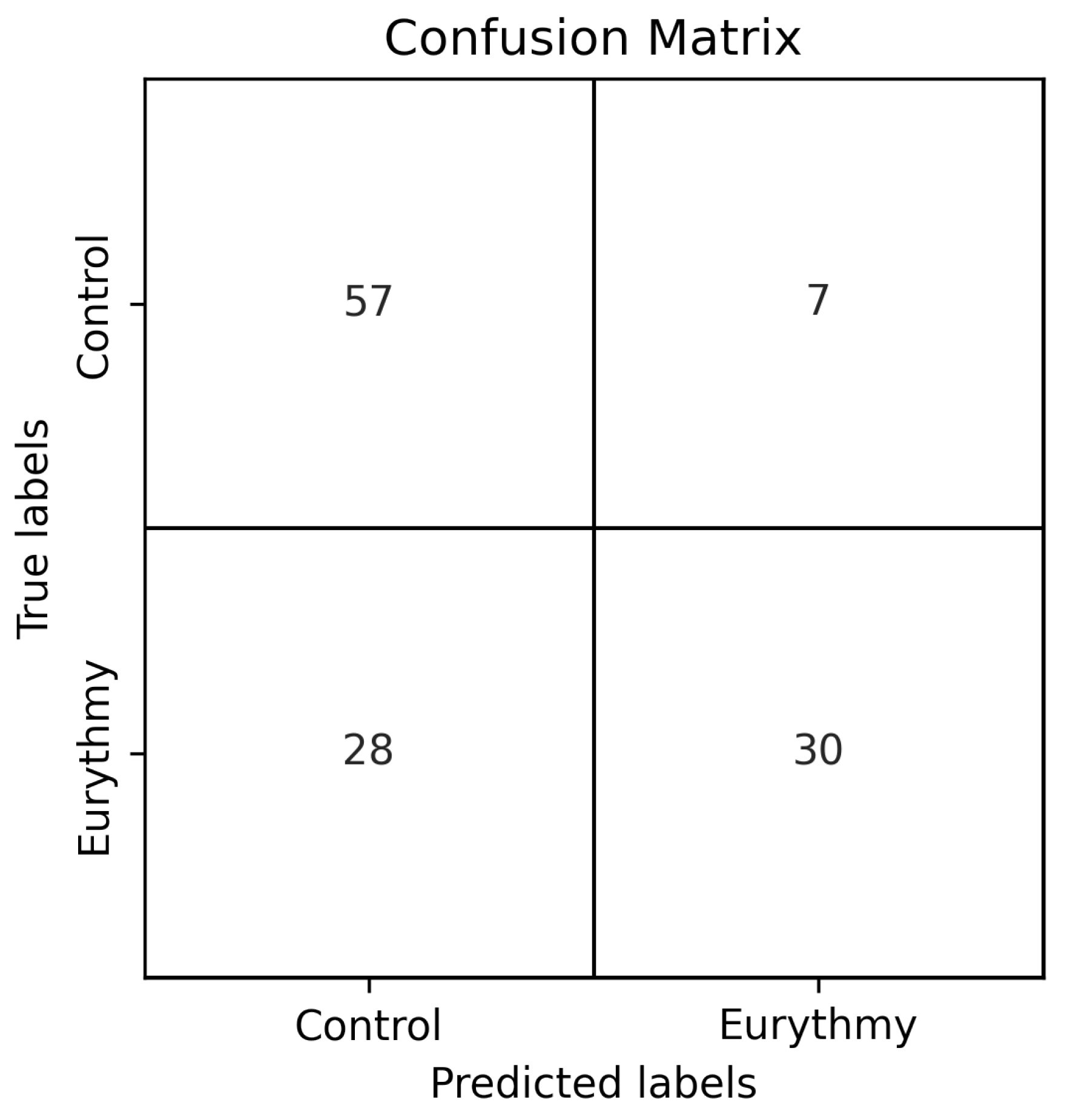1. Introduction
The notion of plant perception has been a subject of great interest among scientists for several decades, and recent research has shown that plants are capable of sensing and responding to their environment in ways previously unknown [
1,
2,
3]. One of the most fascinating aspects of plant behavior is their capacity to perceive and respond to external stimuli, such as light, sound, and touch. However, the extent to which plants can detect and respond to the movements of nearby organisms, particularly humans, is not yet clear. Eurythmy is a form of movement that is believed to have a harmonizing effect on the body and mind [
4]. It involves movements and gestures of the arms, legs, and torso, often accompanied by music or speech. The hypothesis of this study is based on the idea that the movements generated by eurythmy may have an impact on the electrical activity of nearby plants, which can be detected using specialized equipment.
To test this hypothesis, we designed an experiment to measure electric differences of plants [
5] while an actor performed eurythmic gestures in their vicinity. We hypothesized that the electric activity of the plants would change in response to the movement generated by the eurythmist, and that this change would be detectable using electrical sensors.
The purpose of this study was to determine the extent to which the hypothesis holds true, and to explore the potential implications of our findings for our understanding of the relationship between humans and plants. By investigating the impact of eurythmy on the electrical activity of plants, we hope to shed new light on the ways in which plants interact with their environment and respond to external stimuli. Ultimately, our goal is to deepen our understanding of plant awareness, and to explore the many possibilities that arise from this understanding.
2. Related Work
The field of using plants as biosensors has an extensive history applied to various different fields. The pioneer is this field is Indian scientist Jagadish Chandra Bose, who already at the end of the 19th century showed that plants exhibit electrical responses to external stimuli [
6]. Bose invented his own ingenious measurement instruments to demonstrate electric communication within plants, analogous to the nervous systems of animals [
1]. In newer research, electrical signals of plants have been used as biosensors to measure the direction of light, monitoring the environment, and detecting insect attacks and the effects of pesticides and pollution [
7]. Researchers from the same team also found that electrostimulation of tomato plants was picked up by neighboring tomato plants [
3]. More recently it has even been shown that plants also communicate by sound [
2]. Besides using plants as sensors by measuring their electrical voltage differentials, Kovalchuk et al. 2008 [
8], in the field of environmental pollution detection, propose the use of transgenic plants to monitor the presence of genotoxic pollutants in the air.
Different studies investigate the effect of eurythmy on plants, most covering basic research. The work of the Institute ArteNova (Basel) with Tanja Baumgartner, Eckart Grundmann and others is particularly noteworthy. To name a few examples, for instance taste development in apples [
9], shape formation in different plant species [
10], and changes in heredity [
11] were studied, where plants were put under the influence of eurythmy. Other researchers looked at the influence of different eurythmy gestures on the overall shape formation of lettuce [
12] or
Bryophyllum [
13]. In a two-year project, the effect of two different eurythmy gestures on a total of six different plant species was investigated [
14].
In these studies, depending on the methodology, in some cases a small, in others a significant influence of eurythmy on the analyzed properties of the plants was observed. Also, depending on the gesture, eurythmy had an inhibiting or promoting effect on gestalt formation and growth processes. Applied criteria for measuring the influence were both qualitative and quantitative. While some of the studies mentioned leave room for interpretation in their scientific design, others follow strictly scientific criteria.
However, advances have been more recent and scarce when looking at the application of plants as human biosensors. A recent example in the field is Oezkaya et al. 2020 [
15], where the authors achieved 66% accuracy in identifying individuals based on their walking patterns, captured by the potential difference in a plant using a Plant Spikerbox (
https://backyardbrains.com/products/plantspikerbox). The work also achieved an 85% accuracy when classifying whether the walk represented a positive or a negative mood. A main takeaway of this work is that there is potential in using plants as biosensors, and they can offer more information than expected at first. In their experimental process, they used MFCC (Mel-frequency cepstral coefficients) features from the Mel-Frequency-Spectogram that were obtained from Spikerecorder software. MFCCs are the coefficients that together describe the shape of the spectral envelope and are frequently used for voice processing [
16]. These features were then processed by a Random-Forest tree classifier to generate predictions on a test set. Similar to this work, our study aims to expand the field of using plants as biosensors using Machine Learning, but taking into account different sound features from the plant recordings and contrasting the results of different Machine Learning techniques.
Similarly to the previous study, the work of Dürr et al. 2020 [
17] studies voltage differentials in plants during human interactions. In this study, the researchers measured the potential variations of plants and recorded the leaf movement to correlate these measurements with the movements of an eurythmist. The results show some correlation between these factors, and even though the study has its limitations because of the small sample size, it opens the door in this field to further research. Our study aims to expand this experiment by having a bigger sample size and applying Machine Learning techniques to classify whether eurythmic gestures are currently being performed or not.
3. Method
Figure 1 shows the setting where the data collection was performed, namely an agricultural field in the north of Switzerland. In this area, different plants were selected and a voltage measurement device called Spikerbox was connected to them. This tool has two electrodes that need to be connected to the ground and to the leaf of the plant respectively. Using these connection points, it tracks the potential differences of the plant in real time. To do this, it uses the Spikerecorder Software, that converts these signals into wav sound files that can later be processed in other programs.
The recordings were performed taking into account similar weather patterns across the experiment to reduce the noise inherent in the experimental setting. Multiple recordings were performed on different plants, including lettuce plants and beans to create a more diverse dataset consisting of different plant species. During the experiment, multiple recordings were performed on the same plant at different points in time. At the same time, "control readings" were performed simultaneously by collecting spikerbox recordings on plants without any exposure to eurythmy. On the other hand, recordings tagged as "eurythmy" were performed while an actor was performing eurythmic gestures next to the plant. In this way, we were able to capture the voltage differentials of "experimental" and "control" plants, allowing us to analyze a dataset with two populations of vegetables, trying to find distinctive differences in patterns and build classification machine learning models to distinguish between beans and lettuce plants exposed to eurythmy and not.
After data cleaning because of malfunctioning spikerboxes, the final sample contained 28 control files and 22 eurythmic files. The process applied in the experiment is shown in
Figure 2. After the voltage changes in the form of wav files were recorded with the SpikeRecorder, the files were processed using pyAudioAnalysis [
18]. This tool extracts the audio features that can later be used to train different machine learning classification models.
4. Hypothesis
The hypothesis of this work is that through the voltage difference recorded on different plants using specialized equipment, one can distinguish whether someone is performing eurythmic gestures in the vicinity of the plant or not. The purpose of this study was to determine whether the hypothesis holds true and to what extent this difference is perceivable.
5. Results
Figure 3 illustrates an example of the potential variations between a sample plant treated with eurythmy at left, and an untreated sample plant at right. As
Figure 3 indicates, a plant exposed to eurythmy shows a much stronger potential signal with consistently higher voltage. Note that the values in the y-axis are relative, the spikerbox software makes no claims about the absolute value of the amplitude.
Table 1 describes the features which have been computed with pyAudioAnalysis which are significantly different between the eurythmy and the control plants.
In
Table 2 we can observe the results with the lowest p-value after applying a t-test to all of the columns of the two different data classes (Control and Eurythmic). If we set the significance level to 0.005, features with a p-value lower than this will indicate that the difference between the two classes is unlikely to have occurred naturally by mere chance. We have found that 71 features have a p-value below the 0.005 threshold and therefore there are many characteristics that have a statistically significant difference between the two classes. The Cohen’s d measurement that is displayed for each variable also suggests a moderate effect of the variables on the classification, indicating a meaningful difference between the control and eurythmy groups [
19].
Once we have determined that the two different classes have statistically significant distances, we can try training Machine Learning models to classify an audio file as either Control or Eurythmic.
For our experiments we have used a sequential neural network consisting of multiple dense layers with rectified linear unit (ReLU) activation functions and dropout regularization. The first layer is a dense layer which serves as the input layer, the maximum norm of weights was also limited to encourage robust generalization. Next, a dropout layer was added with a 0.2 rate, which randomly sets 20% of the inputs to 0, thus reducing overfitting by reducing the interdependencies between layers. Next a new dense layer is added, which is identical to the first one, except that the input dimension is reduced to half. Next a new dropout layer is added to further improve the model’s robustness. Lastly, an output dense layer is added with a sigmoid activation, which is common in binary classification problems to produce probabilities between 0 and 1.
Figure 5 depicts the computed SHAP (Shapley Additive exPlanations) values for the generated Deep Learning model. These SHAP values provide insights into the individual feature contributions to the model’s output [
20]. The analysis reveals that three specific features, namely
delta mfcc_1_std,
mfcc_1_std and
mfcc_1_mean, exhibit a consistently high average impact on the model’s predictions.
Figure 4.
Evolution of accuracy in classification over epochs.
Figure 4.
Evolution of accuracy in classification over epochs.
Several experiments were performed, creating a range of options by varying the number of epochs and the validation split. The best results for the classification problem were found with 1000 epochs and a validation split of 0.2. In
Figure 4 illustrates the evolution of the accuracy in training and validation over different epochs for the aforementioned experiment. We achieved an accuracy of 66% and an f1-score of 63% in the classification task. Even though the results in
Figure 6 show a large number of false negatives (eurythmy files classified as control), the low number of false positives shows that when our model classifies a file as eurythmic, it has a high chance of being correct, in the case of our validation group we reach an accuracy of 81%. Therefore, the model shows promise in distinguishing between plants in their normal state and plants which are experiencing eurythmic gestures being performed next to them.
6. Discussion
In this experiment we have investigated the hypothesis that plants will respond differently when exposed to human body movement. In particular, a eurythmist was conducting movements and gestures while focused on lettuce or beans two meters away. Using T-tests, we were able to predict a significant difference in potential readings of experimental plants compared to control plants. Using machine learning, we were also able to predict with 66 percent accuracy, if a particular reading of a one to two minute voltage reading sample was from a plant exposed to eurythmy, or from a control plant five to six meters away and not exposed to eurythmy. While this indicates a relationship between the eurythmic gestures of the actor, it is not clear how precisely the plant picks up the movement of the human. Towards that goal, much further work is required.
However, at the very least, these results are an additional indication that a plant might be aware of its environment. As has already been mentioned in the related works section, plants are aware of sounds, movement, and changes in electrical voltage applied to the plant. In this research we find that plants might also be sensitive to rhythmic human body movement.
7. Limitations
While the results we observed are encouraging, this study has many limitations. The first one is the question of causality, as we can only claim correlation, but not causation. While we find changes in voltage readings, it is not clear what precisely triggered these changes. Is it the electrical field of the human, or is it the slight movement of the human body. It has been shown in previous works that plants are sensitive to both [
3,
21]. A second limitation is the small sample size, we are currently repeating the experiment during an entire summer season, leading to two to four cohorts of test probands and a much larger sample size.
8. Future work
Future work in this field of study could focus on identifying more differences in the plant responses to external stimuli. Within the domain of eurythmy, an intriguing avenue for experimentation would be to perform diverse styles of eurythmy and subsequently explore the possibility of distinguishing between them using machine learning techniques. Similarly, can the plant distinguish between different human actors? Future work should also focus on understanding the underlying biological reasoning for plants to react to this type of stimuli.
9. Conclusions
We began the work with the hypothesis that plants can react to external stimuli in the form of non-physical interaction. To test the hypothesis, we set up a controlled experiment using a sample of plants and an actor trained in eurythmic gestures. We recorded the electric potential changes of the plants while the participant performed the gestures in the vicinity of the plants, while the same spikerbox readings were simultaneously done on untreated plants farther away. The specialized equipment used for recording the voltage changes of the plants was designed to accurately measure any changes in electrical activity that may occur in response to external stimuli.
The results of our study showed a difference in the electric potential variations of the plants when the actor performed eurythmic gestures in their vicinity, compared to when the plants were left untreated.
These findings suggest that eurythmic gestures can have a measurable effect on the electrical activity of plants, and may have implications for our understanding of the relationship between human movement and plant behavior. Further research is needed to explore the mechanisms underlying this phenomenon and to investigate the potential applications of this knowledge in areas such as agriculture and environmental monitoring.
Acknowledgements
We thank Hans Braunwalder for being the eurythmist in most of our experiments. We also gratefully acknowledge support of this project by the Software AG Foundation (Sagst) under grant "influence of eurythmy on plants" from 5/12/2022.
References
- Pennisi, E. Plants communicate distress using their own kind of nervous system. Science News, doi: 10.1126/science.aav4161, 2018. [Google Scholar]
- Khait, I.; Lewin-Epstein, O.; Sharon, R.; Saban, K.; Goldstein, R.; et al. Y.A. Sounds emitted by plants under stress are airborne and informative. Cell 186, no. 7: 1328-1336, 2023. [Google Scholar]
- A., V.; Shtessel, Y. Electrical signal propagation within and between tomato plants. Bioelectrochemistry, 124, 2018.
- Büssing, A.; Osterman, T.; Majorek, M.; Matthiessen, P.F. Eurythmy therapy in clinical studies: a systematic literature review. BMC Complementary and Alternative Medicine, 8(1), 1-8, 2008. [Google Scholar]
- Pickard, B.G. Action potentials in higher plants. The Botanical Review 39: 172-201, 1973. [Google Scholar]
- Shepherd, V. At the roots of plant neurobiology: a brief history of the biophysical research of JC Bose. Science and Culture 78, no. 5/6: 196-210, 2012. [Google Scholar]
- A., V.; Ranatunga, D. Plants as Environmental Biosensors. Plant Signaling & Behavior, 1, 105–115, 2006.
- Kovalchuk, I.; Kovalchuk, O. Transgenic Plants as Sensors of Environmental Pollution Genotoxicity. Sensors 2008, 8, 1539–1558. [Google Scholar] [CrossRef] [PubMed]
- Grundmann, E.; Baumgartner, T.; Bolliger, N.; Buchmann, M. Geschmacksentwicklung bei Äpfeln durch eurythmische Behandlungen. Lebendige Erde 4 (40-44), 2018. [Google Scholar]
- Kilthau, W. Eurythmie und ihre Wirkungen auf Pflanzen. Die Drei, 62-64, 2012. [Google Scholar]
- Grundmann, E.; Baumgartner, T. Eurythmie und Vererbung. Jahresbericht 2014. Institut für Eurythmie in Forschung und Kunst, 3, 6-8, 2014. [Google Scholar]
- Henatsch, C. Wirkt gerichtetes Verhalten auf Pflanzen? Lebendige Erde, 40-44, 2012. [Google Scholar]
- Heisterkamp, J. Werkzeuge im Lebendigen. Info3, 2, 32-36, 2010. [Google Scholar]
- Baumgartner, T.; Baumgartner, S.; Heusser, P. Eurythmische Bildekraftfelder: ätherisch-energetische Wirkungen auf Lebewesen. Auftakt Sonderdruck, 12p, 2007. [Google Scholar]
- Oezkaya, B.; Gloor, P.A. Recognizing Individuals and Their Emotions Using Plants as Bio-Sensors through Electro-static Discharge. arXiv preprint arXiv:2005.04591, 2020. [Google Scholar]
- Mermelstein, P. Distance measures for speech recognition, psychological and instrumental, in Pattern Recognition and Artificial Intelligence, C. H. Chen, Ed. Academic, New York, 1976. [Google Scholar]
- Duerr, S.; van Delden, J.; Oezkaya, B.; Gloor, P.A. Eurythmic Dancing with Plants–Measuring Plant Response to Human Body Movement in an Anthroposophic Environment. arXiv preprint arXiv:2012.12978, 2020. [Google Scholar]
- Giannakopoulos, T. pyAudioAnalysis. https://github.com/tyiannak/pyAudioAnalysis, 2022.
- Baguley, T. Standardized or simple effect size: What should be reported? British journal of psychology, 100(3), 603-617, 2009. [Google Scholar]
- Lundberg, S.M.; Lee, S.I. A unified approach to interpreting model predictions. Advances in neural information processing systems 30 2017. [Google Scholar]
- Gagliano, M.; Renton, M.; Depczynski, M. ; Mancuso., S. Electrical signal propagation within and between tomato plants. Oecologia 175: 63-72, 2014. [Google Scholar]
|
Disclaimer/Publisher’s Note: The statements, opinions and data contained in all publications are solely those of the individual author(s) and contributor(s) and not of MDPI and/or the editor(s). MDPI and/or the editor(s) disclaim responsibility for any injury to people or property resulting from any ideas, methods, instructions or products referred to in the content. |
© 2023 by the authors. Licensee MDPI, Basel, Switzerland. This article is an open access article distributed under the terms and conditions of the Creative Commons Attribution (CC BY) license (http://creativecommons.org/licenses/by/4.0/).
